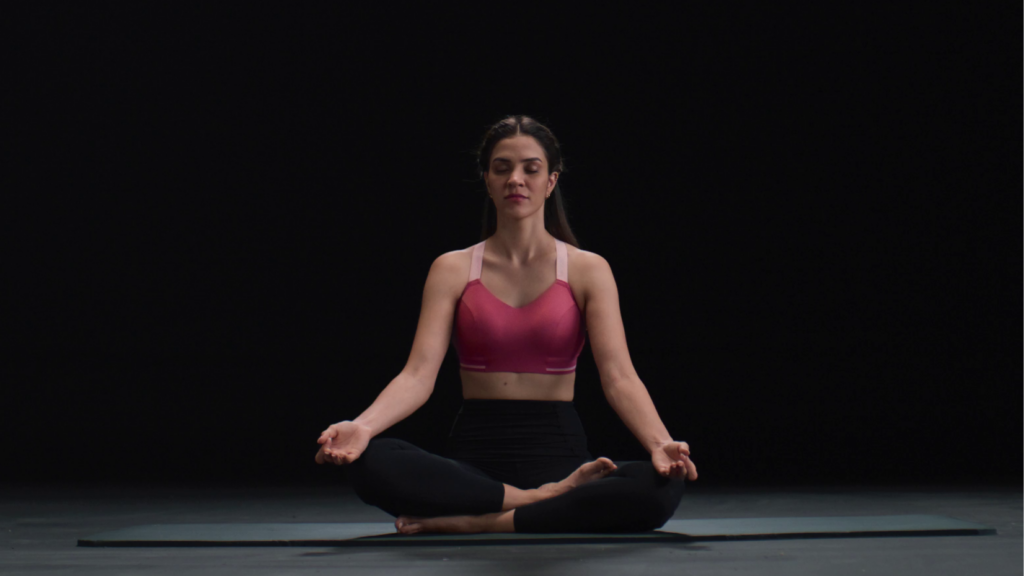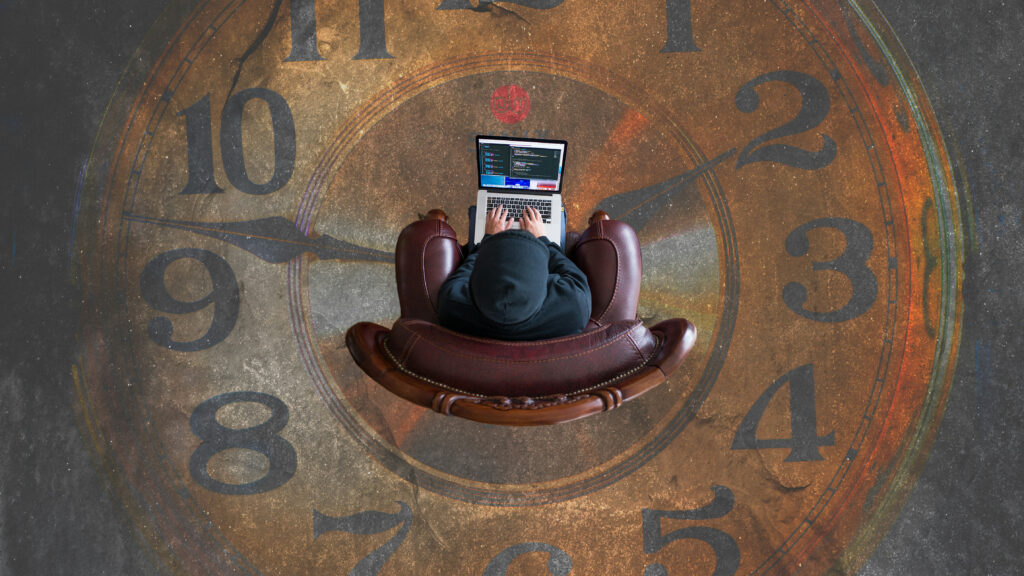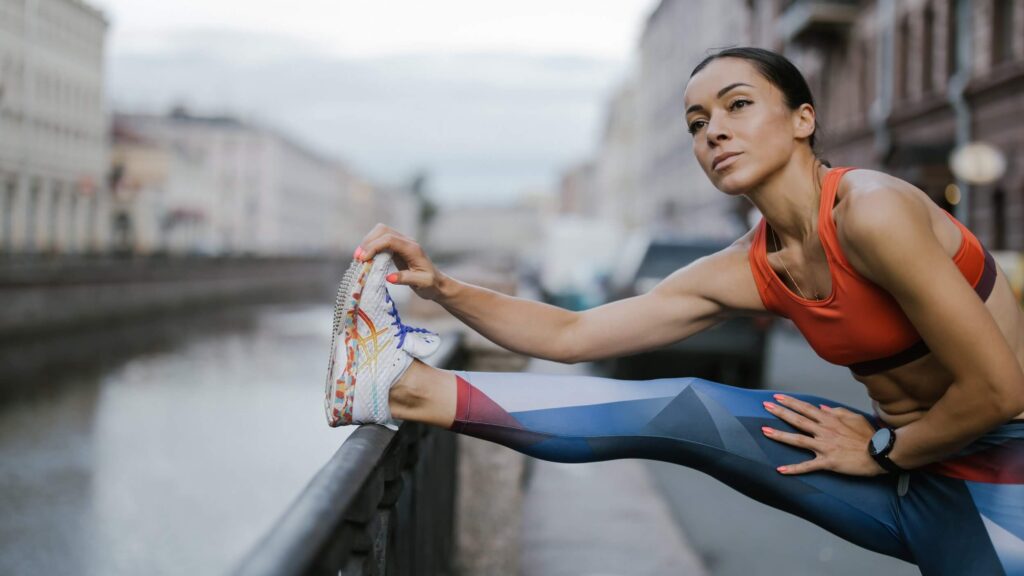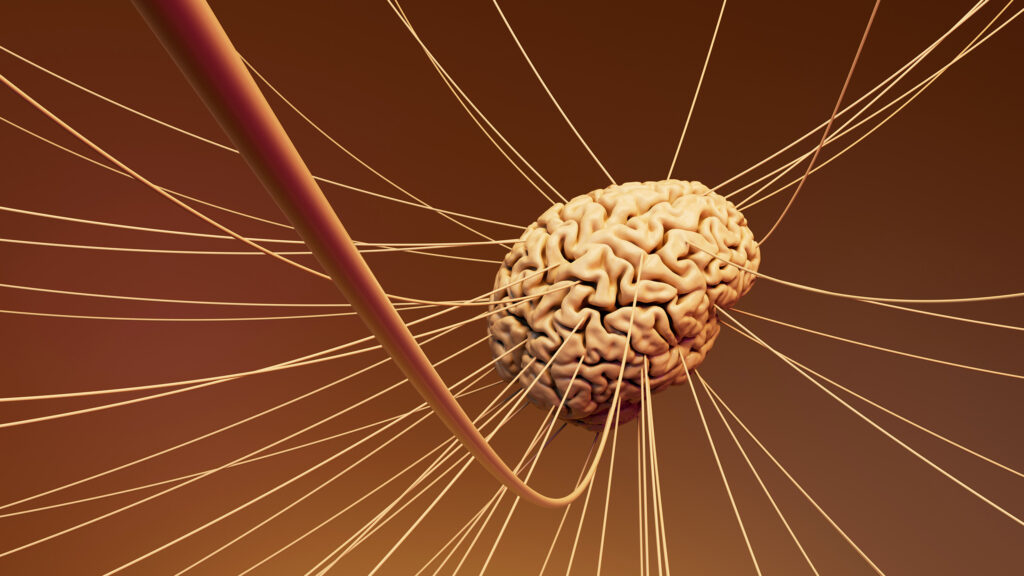Beneath the surface of our seemingly automatic breathing lies an intriguing interplay with the autonomic nervous system (ANS), a key part of our body’s control system.
The autonomic nervous system is a complex network of nerves that regulates involuntary bodily functions, such as heart rate, digestion, respiratory rate, pupillary response, and sexual arousal. The connection between breathing and the ANS is well-documented in modern research. However, diaphragmatic breathing has its roots in many ancient civilizations.
In ancient India, ‘pranayama’ was the term used to denote deep breathing. In Sanskrit, ‘prana’ means life energy, and ‘yama’ implies control. The ancient yogis of India were convinced that deep breathing could control the body’s vital energy flow, enhancing physical wellness and mental acuity.
The Daoist philosophy of ancient China placed great emphasis on nurturing and balancing Qi, the essential energy coursing through the body. Deep breathing was a fundamental practice in Daoism, used in exercises like ‘Dao Yin’ to manage breath, bringing harmony and augmenting Qi flow.
These roots aren’t restricted to Eastern culture.
In Greek civilization, deep breathing was known as ‘pneuma’, the essential breath or life energy, viewed as the godly breath. Early Greek thinkers such as Empedocles linked pneuma with the basic elements of air and fire, perceiving it as the force that sustains life.
The connection between the heart and the autonomic nervous system is profound. The ANS influences heart rate through its sympathetic and parasympathetic branches. When we experience stress or excitement, the sympathetic nervous system kicks in, increasing heart rate and blood pressure. Conversely, during times of relaxation, the parasympathetic nervous system slows the heart rate, promoting a sense of calm.
Breathing Patterns and its Effects on ANS
There is evidence that different breathing patterns can influence the Autonomic Nervous System (ANS). Slow yogic breathing at 5 breaths per minute increases heart rate variability (HRV) and baroreflex sensitivity 1. Alternate nostril breathing (ANB) can enhance autonomic control, promoting relaxation and improving heart rate variability 2. Breathing at a frequency near 0.1 Hz (6 breaths per minute) maximizes heart rate variability, promoting relaxation and optimizing physiological function 3. These findings suggest that specific breathing patterns can modulate the ANS, influencing relaxation and cardiovascular health.
Oxygenation in the Brain
Proper oxygenation is essential for brain function. Oxygen helps produce energy for brain cells and promotes clear thinking. However, excessive oxygenation, such as hyperventilation, can lead to dizziness, tingling sensations, and even fainting.
Breathing affects brain oxygenation. Studies show that respiration can modulate neural activity, impacting brain oxygen levels. During hyperventilation, brain tissue oxygen levels decrease, highlighting the complex relationship between respiration and brain oxygenation 4. Additionally, cerebral oxygenation increases during locomotion, correlating with respiration rate, emphasizing the role of breathing in modulating brain oxygen levels. The brain’s response to breathing is intricate, involving neural activity changes and oxygen dynamics, influencing brain function and cognitive performance.
There are various types of breathing techniques, each offering unique benefits. Below are some popular protocols available on the Ultrahuman App accessible with the Ultrahuman Ring, complete with real-time HRV and HR tracking:
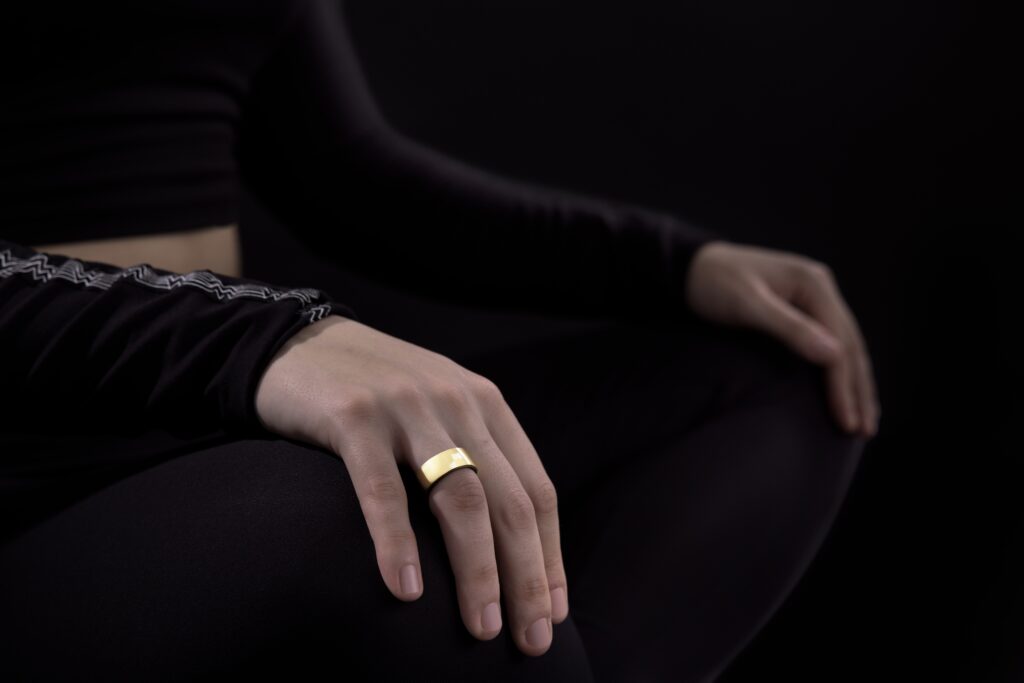
Deep Breathing
Deep breathing involves inhaling slowly and deeply through the nose, allowing the lungs to fully expand, followed by a slow exhale through the mouth. It’s a simple technique that can be done anywhere.
Studies show that deep breathing techniques, such as resonance breathing or slow breathing, can increase HRV, indicating improved autonomic nervous system function. Deep breathing can enhance parasympathetic activity, decrease sympathetic activity, and improve cardiovascular health. Different deep breathing patterns, like loaded breathing or alternate nostril breathing, have varying effects on HRV and emotional responses. Overall, deep breathing exercises can positively influence HR and HRV, promoting better physiological and psychological well-being (5, 6 7 8.
Deep breathing helps you relax, reduces stress, and promotes a sense of calmness by slowing down your heart rate, increasing HRV, slightly decreasing body temperature due to a cooling effect caused by relaxation and improving oxygen flow to your brain and body. The recommended time to perform a deep breathing session is 5-10 minutes, every day.
Breathing Protocol:
- Inhale:
- Type: Inhale
- Duration: 4 seconds
- Hold:
- Type: Hold
- Duration: 2 seconds
- Exhale
- Type: Exhale
- Duration: 6 seconds
Box Breathing (Square Breathing)
Box breathing is a technique where you inhale, hold your breath, exhale, and then hold your breath again, each for the same count of seconds, creating a square pattern. This method primarily helps in decreasing your heart rate and improving your HRV by managing stress, improving focus, and regulating emotions by creating a rhythm that synchronizes your breathing with your body’s natural cycles. The recommended time to perform a box breathing session is 5 minutes per session which can be practiced multiple times a day.
Breathing protocol:
- Inhale:
- Type: Inhale
- Duration: 4 seconds
- Hold:
- Type: Hold
- Duration: 4 seconds
- Exhale:
- Type: Exhale
- Duration: 4 seconds
- Hold:
- Type: Hold
- Duration: 4 seconds
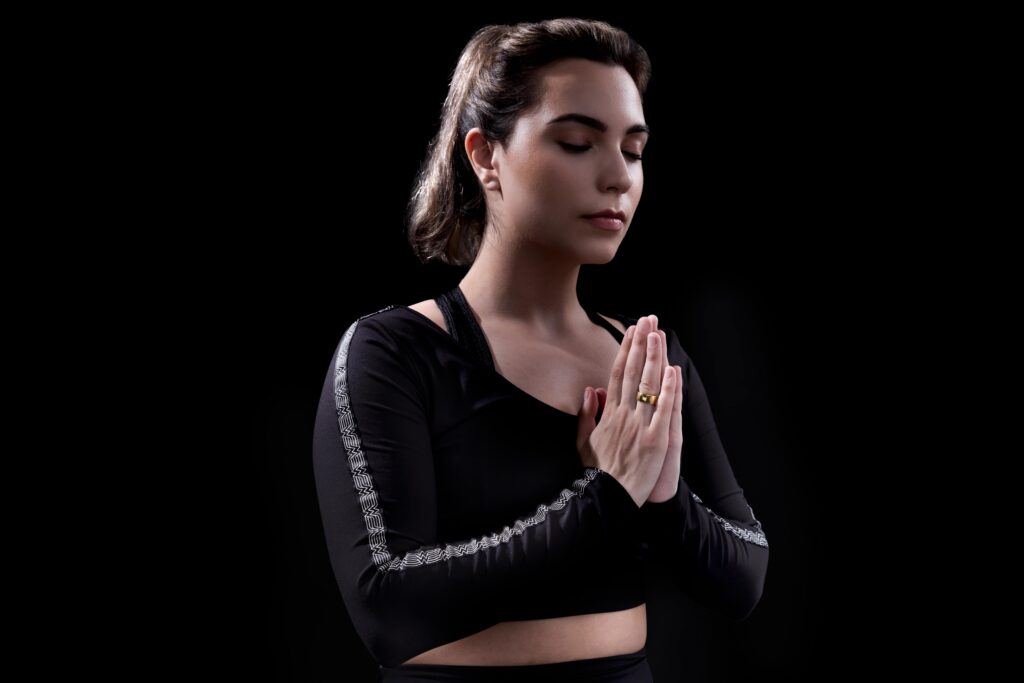
Diaphragmatic Breathing (Belly Breathing)
Diaphragmatic breathing involves breathing deeply into your diaphragm, allowing your abdomen to expand as you inhale and contract as you exhale. It enhances oxygen exchange efficiency, reduces effort in breathing, and promotes relaxation by engaging the diaphragm, leading to a slower heart rate, increased HRV and reduced tension in the body. The recommended time to perform a deep breathing session is 5-10 minutes, every day.
Breathing protocol:
- Inhale:
- Type: Inhale (through the nose, focusing on expanding the abdomen without moving the chest too much)
- Duration: 4 seconds
- Hold:
- Type: Hold (briefly, just a natural pause, if comfortable, otherwise you can skip this phase)
- Duration: 2 seconds
- Exhale:
- Type: Exhale (through the mouth or nose, gently contracting the abdomen to help push the air out)
- Duration: 6 seconds
Alternate Nostril Breathing (Nadi Shodhana)
Nadi Shodhana is a yoga breathing technique where you alternate breathing through each nostril by using your fingers to block one nostril at a time. This technique balances the left and right brain hemispheres, calms the mind, and improves focus and energy by regulating the flow of breath and energy throughout the body.
This method primarily focuses on reducing your heart rate, increasing your HRV and, slightly raising your body temperature due to increased circulation. The recommended time to perform a deep breathing session is 5-10 minutes, every day.
Breathing protocol:
- Inhale Left:
- Type: Inhale (through your left nostril with the right nostril closed)
- Duration: 4 seconds
- Hold:
- Type: Hold (Close both nostrils, using your right thumb and ring finger)
- Duration: 4 seconds
- Exhale Right:
- Type: Exhale (Release your right nostril and exhale through it, keeping the left nostril closed with your ring finger)
- Duration: 4 seconds
- Inhale Right:
- Type: Inhale (through your right nostril with the left nostril still closed)
- Duration: 4 seconds
- Hold:
- Type: Hold (Close both nostrils again)
- Duration: 4 seconds
- Exhale Left:
- Type: Exhale (Release your left nostril and exhale through it, keeping the right nostril closed with your thumb)
- Duration: 4 seconds
4-7-8 Breathing
4-7-8 breathing involves inhaling for a count of four, holding the breath for a count of seven, and exhaling for a count of eight. It assists in falling asleep, reduces anxiety, and manages stress by activating the body’s relaxation response and promoting a sense of calmness through extended exhalation.
This method helps slow down your heart rate, increase your HRV, and slightly decrease body temperature due to a cooling effect caused by relaxation. The recommended time is 4 cycles twice a day which can be gradually increasing to 8 cycles in a day.
Breathing protocol:
- Inhale:
- Type: Inhale (through the nose, gently and quietly)
- Duration: 4 seconds
- Hold:
- Type: Hold (keep the breath in)
- Duration: 7 seconds
- Exhale:
- Type: Exhale (through the mouth, making a whoosh sound)
- Duration: 8 seconds
- Hold:
- Type: Hold (keep the breath in)
- Duration: 7 seconds
- Exhale:
- Type: Exhale (through the mouth, making a whoosh sound)
- Duration: 8 seconds
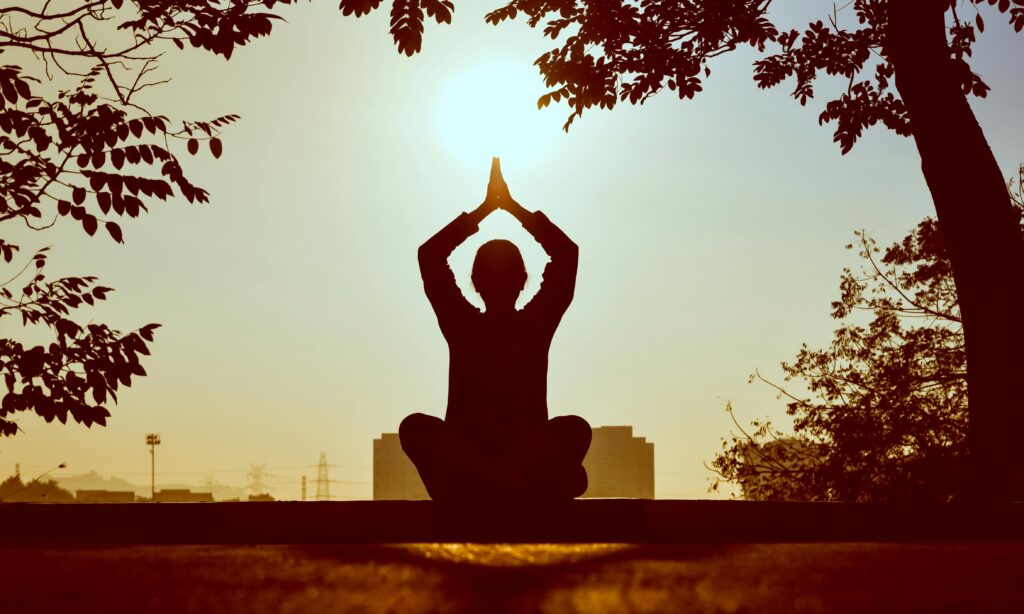
Kapalabhati (Breath of Fire)
Kapalabhati involves rapid, forceful exhalations through the nose, followed by passive inhalations. It increases energy, improves digestion, and strengthens abdominal muscles by stimulating the nervous system, enhancing blood circulation, and promoting detoxification through rhythmic breathing.
This practice may increase your body temperature due to increased metabolic activity, and increase your heart rate due to rapid breathing but will eventually normalize with regular practice. It is also shown to decrease HRV during intense sessions. The recommended time is 1-3 rounds of 30 seconds to 1 minute, with a minute of normal breathing in between.
Breathing protocol:
- Inhale:
- Take a regular inhale. Then, partly inhale and start breathing rapidly, engaging the belly so it moves in with the exhale and out with the inhale.
- Duration: Varies depending on depth of inhale and rate of rapid breathing.
- Hold:
- Draw a deep breath in and retain the air until it no longer feels comfortable.
- Duration: Varies based on comfort.
- Exhale:
- Slowly release the air through the nose.
- Duration: Varies depending on comfort and the amount of air inhaled.
- Rest:
- Sit quietly and observe the effects.
- Duration: Varies based on personal preference.
Buteyko Breathing
Buteyko breathing focuses on nasal breathing and reducing breathing rate to improve overall health. It is often used for asthma and sleep apnea relief and promotes relaxation, improved oxygen utilization, and better carbon dioxide balance in the body.
This method may help decrease your HR and increase your HRV over time. The recommended time to practice this can range from 3-5 minutes to up to 20 minutes, multiple times a day.
Breathing protocol:
- Inhale:
- Take a small, gentle inhale through your nose for 2-3 seconds.
- Exhale:
- Make a relaxed, passive exhale through the nose for 3-4 seconds.
- Hold:
- Hold your breath for 2-5 seconds, based on your comfort.
Holotropic Breathwork
Holotropic breathwork involves intense and rapid breathing to access altered states of consciousness. It is used for psychological and spiritual development, facilitating emotional release, and promoting self-exploration and personal transformation through deep breathing and music.
The impact on HR and HRV may vary widely depending on individual experience but may increase initially and stabilize or decrease eventually. Your body temperature might increase due to increased metabolic activity. These sessions are typically guided and can last anywhere from 2 to 3 hours.
Breathing protocol:
- Inhale:
- Breathe in rapidly and deeply, without any pauses.
- Duration: Continuous
- Exhale:
- Breathe out rapidly and deeply, without any pauses.
- Duration: Continuous
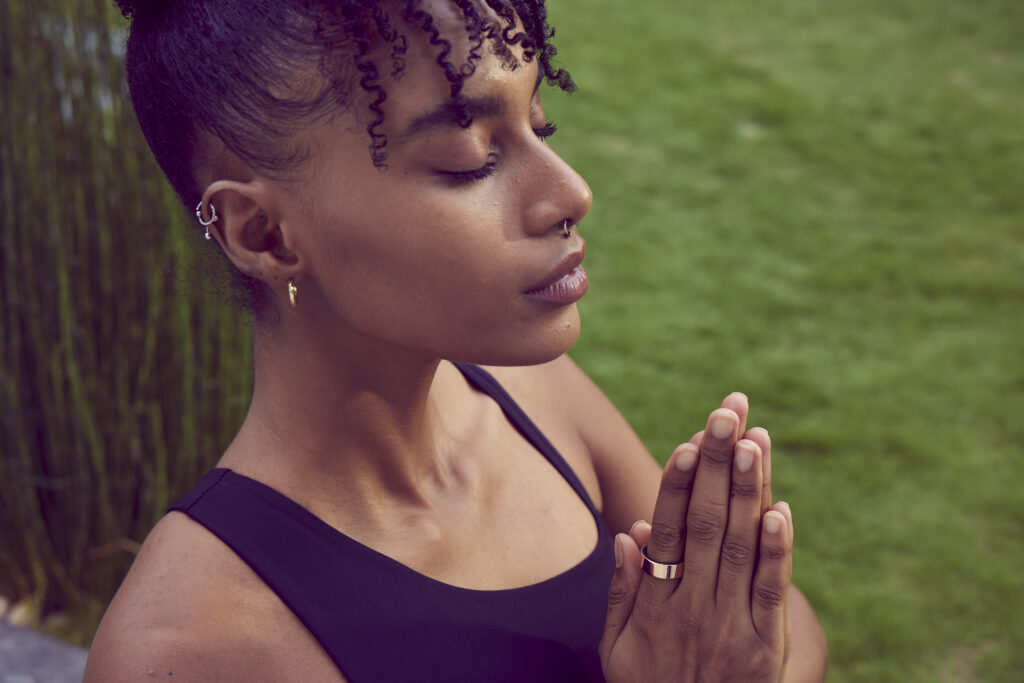
Tummo Breathing
Tummo breathing generates bodily heat and is used for spiritual purposes to ignite inner spiritual fire. It involves specific breathing techniques combined with meditation and visualization to increase inner warmth and promote physical and mental well-being.
This method increases heart rate initially and decreases with advanced practice. HRV may increase during advanced stages and might experience and significant increase in body temperature due to inner heat generation. Practice sessions might last from 5 to 20 minutes, depending on experience and comfort.
Breathing protocol:
- Forced Exhalation:
- Type: Exhale (Expel all the air from your lungs forcefully through the mouth, engaging your abdominal and pelvic muscles.)
- Duration: 1 second
- Breath Retention and Visualization:
- Type: Hold (After exhaling completely, close your mouth, and hold your breath. Visualize a flame at the base of your spine.)
- Duration: 10 seconds
- Inhale Slowly:
- Type: Inhale (Inhale slowly and deeply through the nose, imagining drawing energy up the spine to the top of the head, igniting the flame further.)
- Duration: 5-10 seconds
- Breath Retention and Visualization:
- Type: Hold (Hold the breath at the top, focusing on the flame and its warmth spreading throughout your body.)
- Duration: 15 seconds
- Exhale Slowly:
- Type: Exhale (Exhale gently through the nose or mouth, visualizing the spreading warmth and energy.)
- Duration: 5-10 seconds
Ujjayi (Ocean Breath)
Ujjayi breath involves breathing through the nose with a slight constriction in the throat, creating a sound similar to ocean waves. It helps maintain rhythm and focus during yoga practice and has a calming, meditative effect by enhancing awareness, promoting relaxation, and reducing distractions.
This method lowers heart rate, increases HRV and has a neutral effect on your body temperature. The recommended time is 5-15 minutes during yoga practice or as a standalone practice.
Breathing protocol:
- Inhale:
- Inhale slowly and deeply through the nose, slightly constricting the back of the throat to create a gentle hissing sound.
- Duration: 4-5 seconds
- Exhale:
- Exhale slowly through the nose with the slight constriction of the throat, maintaining the hissing sound
- Duration: 4-5 seconds
Bhastrika (Bellows Breath)
Bhastrika involves rapid and forceful inhalations and exhalations through the nose. It is energizing, improves circulation, and is thought to cleanse the body and energy channels by increasing oxygen supply, stimulating the nervous system, and promoting detoxification through vigorous breathing.
This practice can initially increase heart rate due to rapid breathing but may normalise with practice. Your HRV may decrease during intense practice and you might notice a slight increase in your body temperature due to increased metabolic activity.
Breathing protocol:
- Inhale:
- Inhale forcefully and deeply through the nose, expanding your lungs fully.
- Duration: 1 second
- Exhale:
- Exhale forcefully through the nose, expelling all the air from your lungs.
- Duration: 1 second
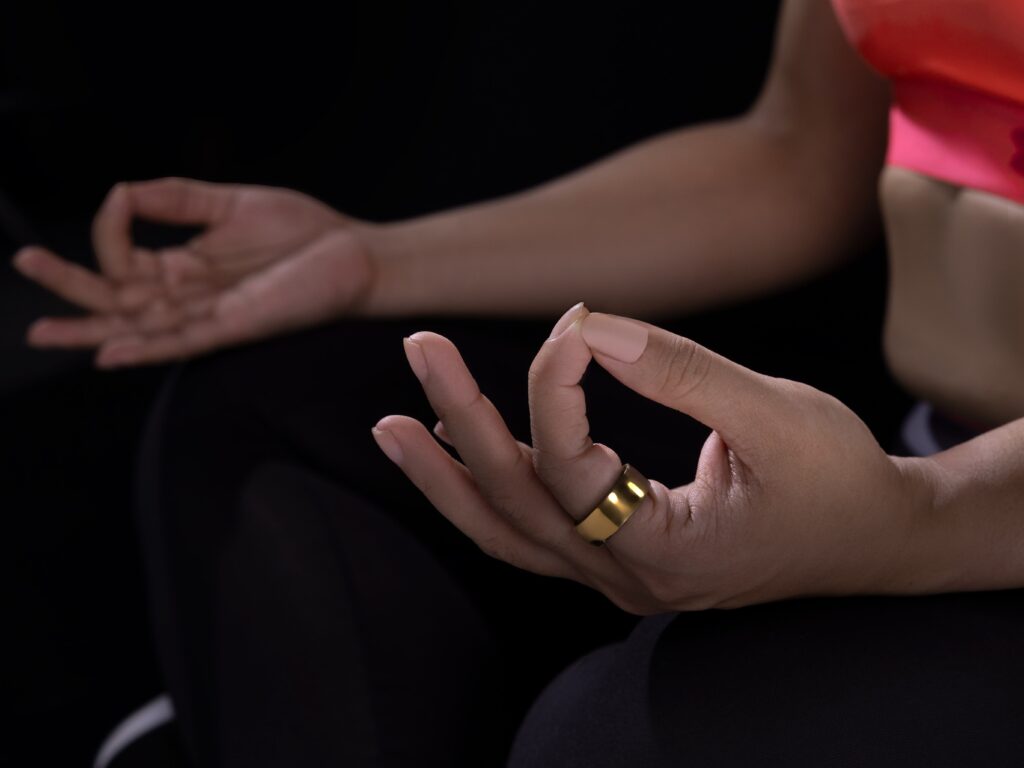
Qi Gong Breathing
Qi Gong breathing involves gentle, coordinated movements and breathing techniques to harmonize body, mind, and spirit. It is used in traditional Chinese health practices to enhance vitality, promote relaxation, and improve overall well-being through mindful breathing and movement. This practice increases your HRV and reduces your HR maintaining a neutral body temperature. The recommended time for this is 15-30 minutes daily.
- Inhale:
- Slowly inhale through your nose, focusing on drawing the breath down into your lower abdomen. Imagine filling your abdomen with air, allowing it to expand fully.
- Duration: 4-5 seconds
- Hold:
- Gently hold your breath, allowing the Qi to accumulate and circulate throughout your body.
- Duration: 1-2 seconds (optional, depending on the specific Qi Gong practice)
- Exhale:
- Slowly exhale through your mouth or nose, visualizing any stress, tension, or negative energy being expelled from your body.
- Duration: 4-5 seconds
- Hold:
- Pause briefly before the next inhalation. This moment of stillness is an integral part of the breathing cycle.
- Duration: 1-2 seconds (optional, based on comfort and the flow of the practice)
Soma Breathwork
Soma Breathwork combines rhythmic breathing with music for a meditative experience, leading to heightened states of awareness. It facilitates deep relaxation, emotional release, and personal transformation by syncing breath with music, promoting mindfulness, and accessing altered states of consciousness.
Your HR may vary widely depending on each individual while your HRV can increase during meditative states. You might also notice an increase in body temperature due to increased metabolic activity. Sessions can range from 20 minutes to 1 hour.
Breathing protocol:
- Inhale:
- Inhale deeply and smoothly through the nose, filling your lungs from the bottom up.
- Duration: 2 seconds
- Exhale:
- Exhale smoothly through the nose or mouth, releasing the air from your lungs.
- Duration: 2 seconds
Wim Hof Method
The Wim Hof Method combines controlled hyperventilation, cold therapy, and meditation. It is known for improving immune response, increasing resilience to cold, and enhancing overall well-being through breath control, exposure to cold, and mindfulness practices. While there may not be specific evidence to answer exactly how the Wim Hof Method affects Heart Rate (HR) and Heart Rate Variability (HRV), studies show that HRV-guided High-Intensity Functional Training (HIFT) can improve cardiovascular function and body composition 9. Ice massage has been shown to reduce HR and improve HRV through vagal dominance 10. Additionally, breathing at resonance frequency can positively impact HRV and mood 11.
Your HR initially may increase due to hyperventilation but can decrease during cold exposure. You might notice an increase in HRV with regular practice. This practice typically takes about 15 minutes.
Breathing protocol:
- Inhale:
- Breathe deeply through your nose or mouth, filling the lungs.
- Duration: 2-3 seconds
- Exhale:
- Let the breath go freely through the mouth or nose, not fully emptying the lungs.
- Duration: 2-3 seconds
Notes
– Repeat for 30 breaths.
– On the 30th breath, exhale to 90 per cent and hold for as long as you can.
– When you feel your body really needs to take a breath, inhale fully and hold for 15 seconds before releasing.
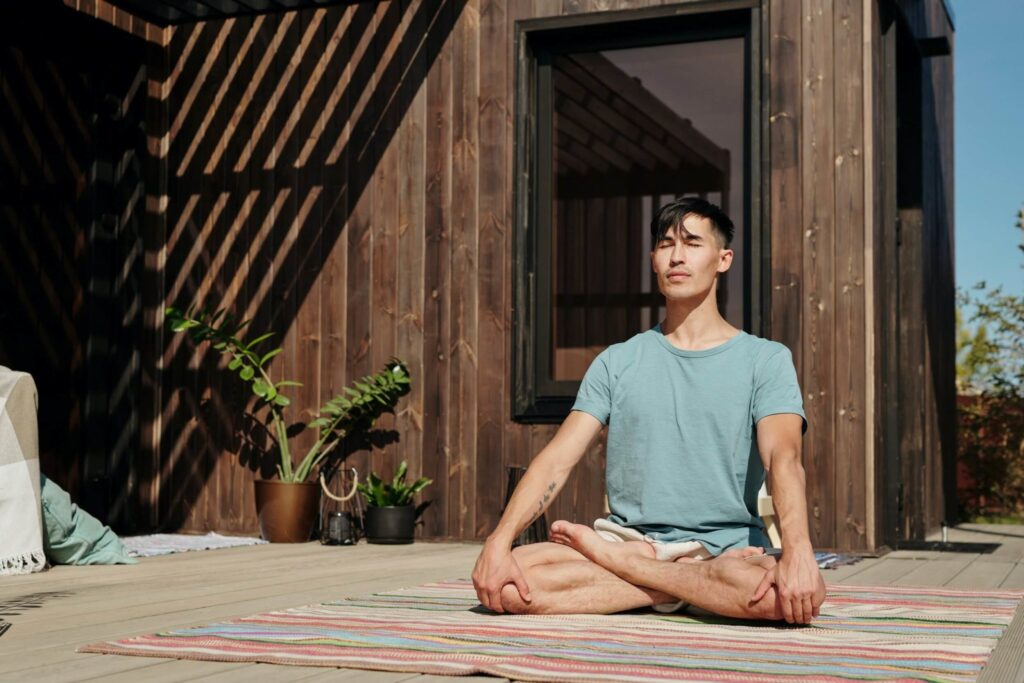
Buteyko Reduced Breathing
Buteyko Reduced Breathing aims to reduce breathing rate and volume for overall health improvements. It focuses on nasal breathing, breath control, and relaxation techniques to optimize oxygenation, improve lung function, and promote physical and mental well-being. This method decreases your HR and improves your HRV over time. The recommended time is for about 15-20 minutes, multiple times a day.
Breathing protocol:
- Inhale
- Inhale gently and quietly through your nose, focusing on keeping your breathing light and shallow.
- Duration: About 2 seconds
- Exhale
- Exhale gently and quietly through your nose, making the exhale slightly longer than the inhale.
- Duration: About 3 seconds
- Hold
- After a normal exhalation, hold your breath until you feel a slight air hunger, indicating an increase in carbon dioxide.
- Duration: 3-5 seconds
Coherent Breathing
Coherent breathing involves breathing at a steady rhythm, usually at a rate of five breaths per minute. It enhances heart rate variability, induces calmness, and promotes physiological coherence by synchronizing breathing with heart rhythms and promoting relaxation through balanced breath control. This method decreases your HR and improves your HRV over time. The recommended time is 10 minutes to start with.
Breathing protocol:
- Inhale:
- Inhale slowly and deeply through your nose, filling your lungs fully but comfortably.
- Duration: 6 seconds
- Exhale:
- Exhale slowly and completely through your nose or mouth, whichever feels more comfortable.
- Duration: 6 seconds
Shamanic Breathing
Shamanic breathing is part of ritualistic healing practices in indigenous cultures, altering consciousness and promoting emotional and spiritual healing. It involves deep, rhythmic breathing to induce trance states, access inner wisdom, and facilitate spiritual connection and personal transformation through breathwork and ritualistic practices.
Your body temperature and heart rate may vary widely with an individual’s experience depending on ritual and environmental factors. HRV may increase during altered states of consciousness. Sessions can last from a few minutes to over an hour, depending on the context and guidance.
Breathing protocol:
- Inhale:
- Take deep, full breaths rapidly through the mouth, focusing on filling the lungs.
- Duration: 2-3 seconds per breath
- Exhale:
- Allow the breath to be released quickly and naturally without force.
- Duration: 2-3 seconds per breath
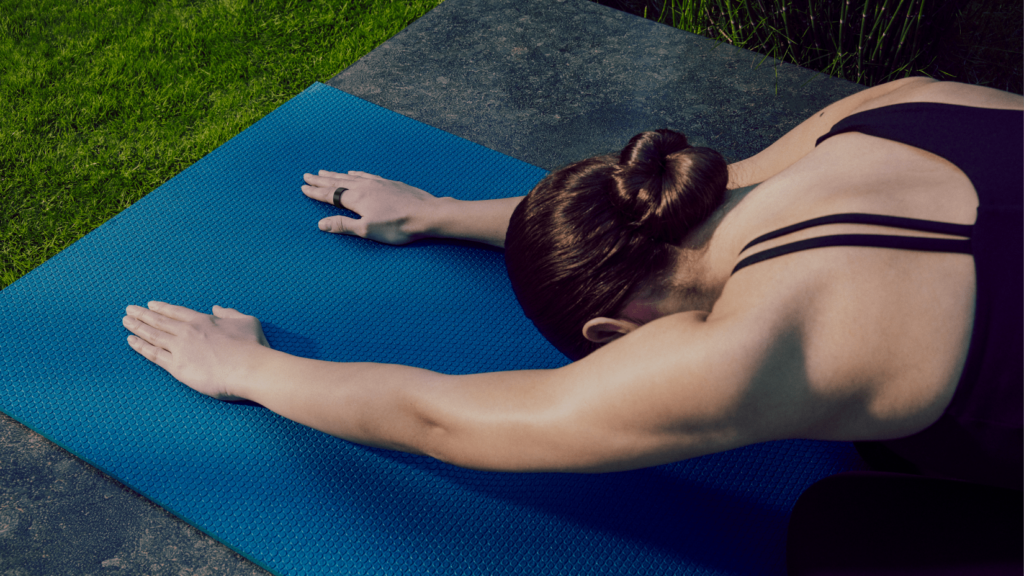
Each of these techniques constitutes a distinct approach to harness the potential of respiration in modulating physiological parameters such as stress levels, energy, and concentration. The scientific evidence suggests that different breathing practices can significantly impact heart rate (HR), heart rate variability (HRV), and body temperature.
For instance, practices like deep breathing and yogic breathing have been shown to reduce HR and increase HRV, indicating enhanced parasympathetic activity and reduced sympathetic activity, which is associated with stress reduction and improved cardiovascular health 1, 2, 3, 4. Similarly, techniques like the Wim Hof Method can also modulate HR and HRV, promoting overall well-being 5, 6, 7.
All these techniques are available on the Ultrahuman App accessible with the Ultrahuman Ring, with real-time tracking of HRV and HR to understand the physiological impact of the protocols.
Conclusion
The autonomic nervous system is a remarkable aspect of our physiology that influences many aspects of our health and well-being. Understanding its functions and how it interacts with our heart, breathing, and various breathing techniques can empower us to take control of our health. By incorporating mindful breathing practices into our daily lives, we can harness the power of the autonomic nervous system to promote relaxation, reduce stress, and enhance overall wellness.
Sources
- Harvard Health Publishing – The Power of Breathing: Harnessing the Breath to Improve Health
- Mayo Clinic – Stress Management: Breathing Exercises for Relaxation
- National Institutes of Health – Autonomic Nervous System
- American Heart Association – Stress and Heart Health
- ScienceDirect – The role of the autonomic nervous system in respiratory and cardiovascular control during sleep
Make sure to check out these sources for more in-depth information on the autonomic nervous system and breathing techniques.




